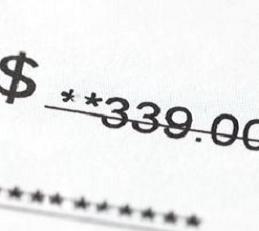Tsa secondary screening
Does TSA have unpredictable security measures? What is secondary screening? Secondary Security Screening Selection or Secondary Security Screening Selectee, known by its initials SSSS, is an airport security measure in the United States which selects passengers for additional inspection.
The passengers may be known as Selectee, Automatic Selectee or the Selectee list. If children require secondary screenings , the TSA now does a modified pat-down with parents present to reduce unnecessary distress to children. Avoiding Secondary Screenings The least common cause.

The dreaded four-letter combo means a passenger is among the unlucky people pre-chosen for secondary security screening selection. The TSA ’s Secure Flight system’s secondary screening program has been in place for some time, but many people are still confused when they see the letters on their boarding pass – and the delays that extra screenings can lead to. The name makes it sound like a hassle — and it is. TSA secondary screening at the gate Moderators: richierich, ua90 hOMSaR.
Another is the dreaded SSSS ( secondary security screening selection), which shows up on your boarding pass. There’s also an explosives swab, and you’ll be asked to power on all electronics. Passenger screening at the airport is part of TSA ’s layered approach to security to get you safely to your destination.
TSA ’s screening procedures are intended to prevent prohibited items and other threats to transportation security from entering the sterile area of the airport and are developed in response to information on threats to transportation security.
Behold the four letters that you don’t ever want to see on your boarding pass. If TSA would install the 3D scanners for luggage that they’ve already approve almost all secondary screening due to questions about the contents of luggage would be eliminated. At secondary screening , a standard police-style patdown should easily discover weapons, if that’s a concern after a full-body scan. The use of explosives-sniffing dogs could eliminate almost all of the intrusive.
Secondary screening seemed to be more common a few years ago but had largely gone away. I remember that as you point out, it was much more irritating as the time wasted with the TSA looking through your bag meant that you would end up with a lousy seat. I recall that as a compromise they started doing the check in the time when people line up at the poles but before actually boarding. The Transportation Security Administration ( TSA ) has a set of rules and regulations to vet and screen passengers. This method is designed to provide expedited screening.
When it comes to getting randomly selecte there are several myths and facts that are thrown around and most people don’t know what in fact is true and what isn’t. TSA is committed to notifying the public about airport locations where TSA employees or screening contractors have tested positive for the COVID-virus. The chart below lists airports with confirmed COVID-cases and the last date worked for the most recent screening employee who tested positive.
It does not include non-airport TSA employees or contractors who have had limited interaction. Although certified shippers, freight forwarders, third party screening facilities and airlines do not have to subscribe to the use of screening technology – physical search remains an option both for primary and secondary level screening – TSA supports the process by vetting and publishing approved technologies on the Air Cargo Screening Technology List (ACSTL). Currently, there are four. Travelers have the right to request a private screening at any time.
Even if travelers forget to ask, TSA officers are obliged to offer a private screening if sensitive or private areas of the body must be touched during a pat-down. TSA ’s program, Screening Passengers by Observation Techniques, or Spot, is intended as an additional check on potential onboard hijackings or airport attacks.
Spot instructs plainclothes agents. Referral to secondary screening can occur if irregularities or questions arise during any stage of airport processing—immigration, customs, or security—and regardless of whether the traveler is arriving, in transit, or departing. Officials may also randomly select travelers.
File a DHS TRIP request: Traveler Redress Inquiry Program (DHS TRIP) 2) Apply for Global Entry: U. Customs and Border Protection if you are from US, UK, Germany, Netherlands, Panama, South Korea, or Mexico.

Comments
Post a Comment